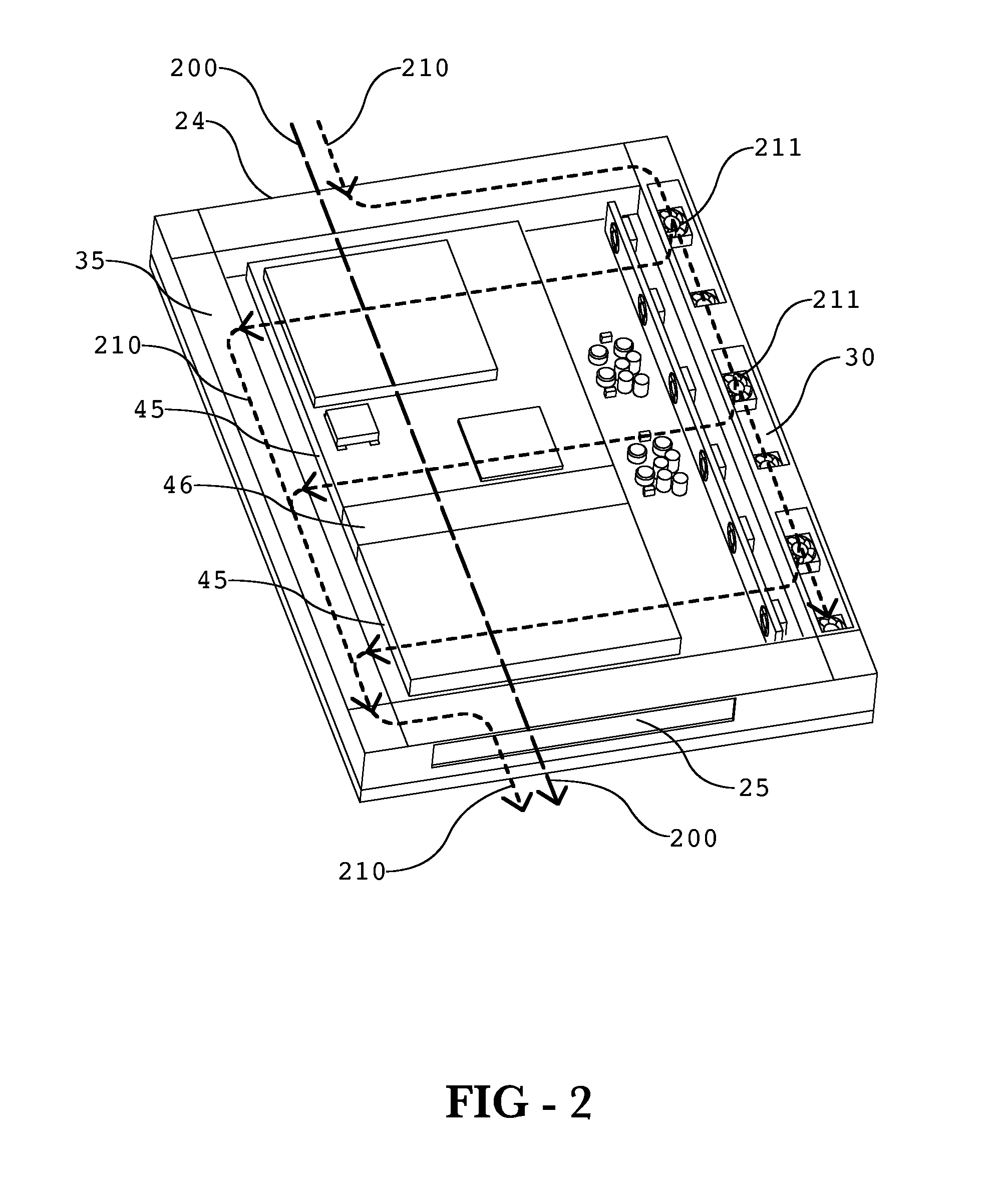System and method for selectively engaging cooling fans within an electronic display
a technology of electronic displays and cooling fans, applied in the direction of lighting and heating apparatus, electric apparatus casings/cabinets/drawers, instruments, etc., can solve the problems of increasing the cooling difficulty of internal display components, and increasing the cost of cooling
- Summary
- Abstract
- Description
- Claims
- Application Information
AI Technical Summary
Benefits of technology
Problems solved by technology
Method used
Image
Examples
Embodiment Construction
[0008]Exemplary embodiments use a combination of circulating gas and ambient gas in order to adequately cool an electronic display. Circulating gas may be used to remove heat from the front of the image assembly. When using a LCD as the electronic image assembly, circulating gas may also be used to remove heat from the backlight cavity of the LCD. Because the gas is only circulating within the display, it can remain free of particulate and contaminates and will not harm the display.
[0009]Ambient gas may be ingested into the display in order to cool the circulating gas. The ambient gas and the circulating gas may be drawn through a heat exchanger which will allow the heat to transfer from the circulating gas to the ambient gas, preferably without letting the ambient and circulating gases mix with one another. An exemplary embodiment would use a cross-flow heat exchanger. An additional flow of ambient gas can be drawn across the rear surface of the image assembly to remove heat from t...
PUM
 Login to View More
Login to View More Abstract
Description
Claims
Application Information
 Login to View More
Login to View More - R&D
- Intellectual Property
- Life Sciences
- Materials
- Tech Scout
- Unparalleled Data Quality
- Higher Quality Content
- 60% Fewer Hallucinations
Browse by: Latest US Patents, China's latest patents, Technical Efficacy Thesaurus, Application Domain, Technology Topic, Popular Technical Reports.
© 2025 PatSnap. All rights reserved.Legal|Privacy policy|Modern Slavery Act Transparency Statement|Sitemap|About US| Contact US: help@patsnap.com



